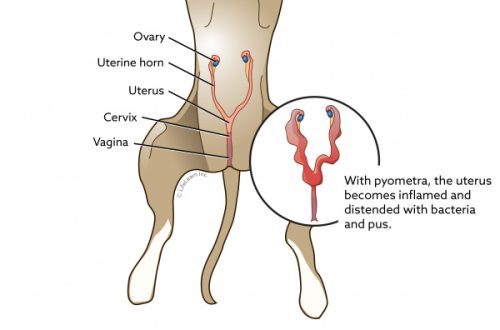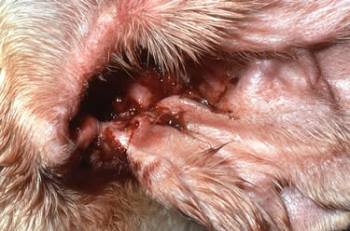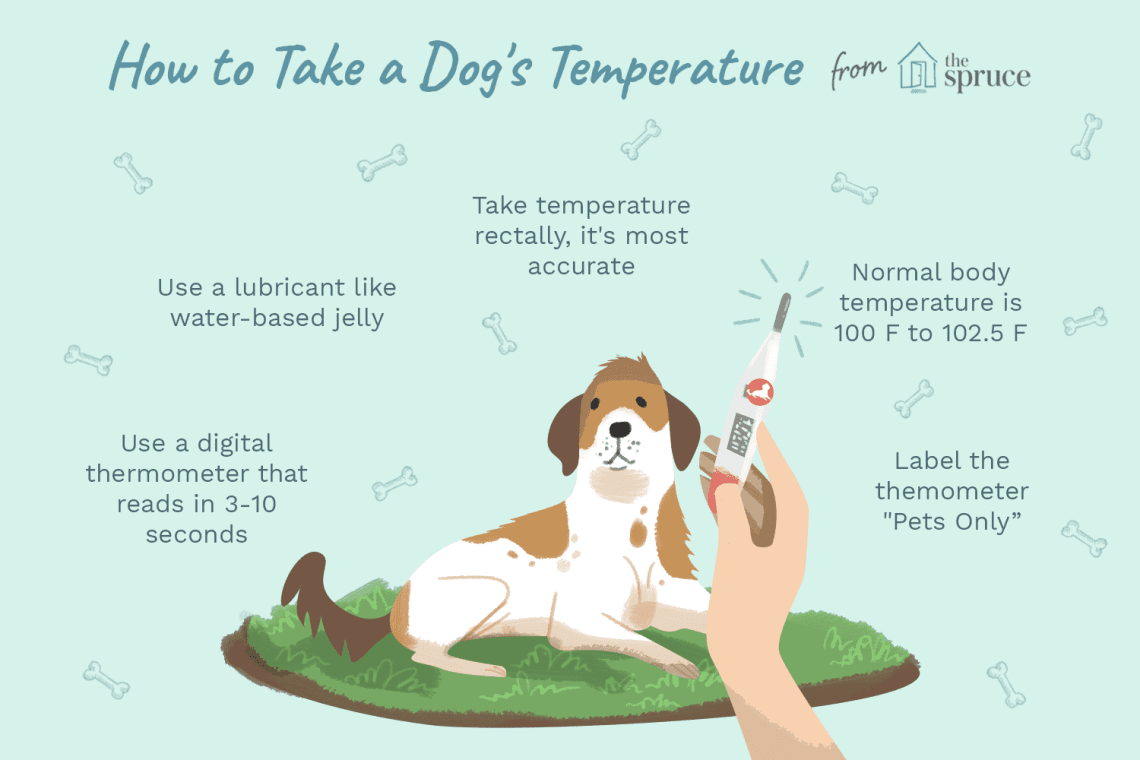
Normal temperature in dogs

Contents
What are the normal body temperatures for dogs?
The average body temperature of a dog is 37,5–39,0 °C. There is a theory that the larger the dog, the lower its temperature.
What affects temperature?
the physiological state of the animal’s body (pregnancy, stress, hunger, food intake);
environmental conditions (for example, humidity, cold, heat);
pathological state of the body, diseases – viral, bacterial infections, massive injuries, poisoning, etc.
Consider what temperature is normal for different dogs.
Small breed dogs
The normal body temperature for dogs of small breeds is from 2 to 10 kg (for example, Chihuahua, Yorkshire Terrier, Biewer Terrier, Toy Terrier, Belgian Griffon, Bichon Frize, Boston Terrier, Border Terrier, West Highland White Terrier, Maltese, Pomeranian, Chinese Crested, Petit Brabancon, Japanese Chin, Pug) – 38,5–39,3 °C.
Medium breed dogs
The temperature norm for medium breeds is from 11 to 25 kg (for example, Austrian Hound, Australian Shepherd, Austrian Pinscher, American Staffordshire Terrier, American Cocker Spaniel, English Cocker Spaniel, English Setter, Artesian-Norman Basset, Basenji, Beagle, Border Collie, Bearded Collie, Barbet, Belgian Shepherd, Bouvier of Arden) – 37,5–39,0 °C.

Large breed dogs
Normal body temperature in dogs of large breeds from 26 kg and more than 45 kg (for example, Husky, Labrador, Doberman, Cane Corso, Alabai, Akita, Basset Hound, Boxer, White Swiss Shepherd, Weimaraner, Dalmatian, Dogue de Bordeaux, Bullmastiff, Spanish Mastiff, Neopolitan Mastiff, Newfoundland, Rottweiler, St. Bernard, Tibetan Mastiff, Leonberger, Bernese Mountain Dog) – 37,2–38,5 °C.
Puppies temperature limits
Newborn puppies do not yet have a thermoregulatory system, so they may experience significant increases or decreases in temperature under the influence of the environment. Normally, a puppy’s body temperature is slightly higher than that of an adult dog – 38,5—39,5 °C.
summary table
small breed puppy | From 38,5 °C to 39,2 °C |
Medium breed puppy | From 38,2 °C to 39,1 °C |
large breed puppy | From 38,1 °C to 39,0 °C |
adult small breed dog | From 38,5 °C to 39,3 °C |
Adult medium breed | From 37,5 °C to 39,0 °C |
Large Breed Adult | From 37,2 °C to 38,5 °C |
Temperature measurement in dogs
Body temperature is regulated by the contact of the environment with superficial blood vessels. Most often – through breathing (tongue, mouth), superficial vessels (on the joints of the paws), through the fingertips, auricles.
Body temperature can be measured with a mercury or electronic thermometer, or with an infrared thermometer. In the case of using an infrared thermometer, it is necessary to push the dog’s hair on the stomach, and apply it as close to the skin as possible. In this case, a correction of 1-1,5 degrees is immediately taken into account, which must be added to the obtained value. If there is any doubt, or the indicator turned out to be high, it should definitely be double-checked by rectal examination with a mercury or electronic thermometer.
Rectal examination will require outside help. Someone must fix the pet on its side in a lying position or in a standing position. This study is carried out as follows: a plastic bag is put on the tip of the thermometer and disinfected with an antiseptic solution. Then, in order to avoid mechanical discomfort or damage to the anus and rectum of the dog, it is lubricated with a greasy cream, petroleum jelly or oil. Then the prepared tip of the thermometer is inserted into the pet’s rectum. The measurement time directly depends on the type of thermometer. For electronic – 60 seconds, for mercury – 5-7 minutes.
It is very important to conduct the study in calm conditions, without showing aggression or screaming, physical violence. Otherwise, a frightened pet will behave hostilely, resist, and each such measurement in the future will become torture for both the owner and the dog / puppy.
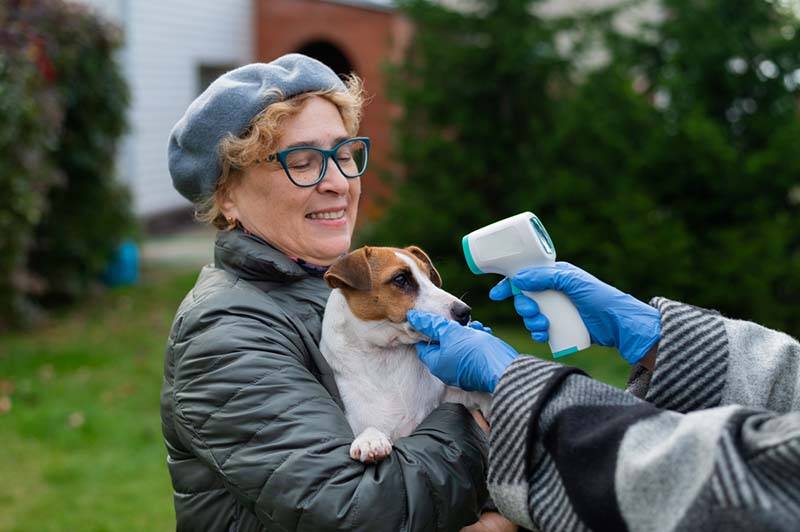
Possible Causes of High and Low Temperatures
An increase or decrease in body temperature in dogs can be observed for many reasons – both physiologically natural and under the influence of pathogenic factors and diseases.
A low temperature in a dog may be due to hypothermia, poisoning, systemic diseases, prolonged hunger, etc. Visually, this condition can be manifested by chills, lethargy, weakness, trembling, refusal to eat. The lower parts of the animal’s limbs are usually cold.
An elevated temperature can be a reaction to stress, pregnancy, physical activity, vaccination, high ambient temperatures, an inflammatory process of any origin, both viral and bacterial. Clinically, this is manifested by lethargy, refusal of food, heavy breathing. To the touch, the pet has hot ears, paws and nose. Owners often pay attention to the dog’s dry nose as an independent indicator of fever, it is unreliable. But, at the same time, a weakened pet may stop licking its nose due to dehydration and dry mucous membranes. Therefore, a dry surface of the nose, in itself, can sometimes indicate that the pet is worth examining and checking its temperature.
If you notice any changes in your dog’s body temperature, you should contact your veterinarian immediately.
disease
Heatstroke – this is a long-term effect on the body of high ambient temperatures. This condition occurs more often in summer in hot countries. The pet overheats, the thermoregulation of the body is disturbed. So, it is very difficult for a dog to cool down on its own. Symptoms: lethargy, apathy, refusal to eat, frequent breathing, loss of consciousness. First aid at home: cold compresses, wet towel, coolness. Clinical treatment: diagnostics, droppers, general condition control.
Pyometra – hormonal inflammation of the organs of the reproductive system of the female. Symptoms: Irregular estrus, lethargy, leakage from the loop, fetid odor from the pet, refusal to feed. Clinical treatment: therapeutic or surgical treatment, which is accompanied by symptomatic correction of the pet’s condition – droppers, antibiotic therapy, etc.
Viral diseases – for example, canine distemper, parvovirus enteritis, infectious hepatitis. At home, the owner of the dog can ensure the prevention of these diseases by regular vaccinations. Symptoms – depending on the type of infectious disease: diarrhea, vomiting, discharge from the eyes or nose, neurological changes, up to seizures. Treatment in the clinic: infusion, antibacterial, antiemetic therapy, monitoring of the pet’s condition and indicators of his tests.
blood parasites – microorganisms that enter the body of a dog with an insect bite, more often than a tick, and infect it, causing, among other things, a nonspecific increase in temperature. Symptoms: lethargy, refusal to eat, brown urine, diarrhea, intermittent claudication – depending on the type of parasite that caused the pathological condition. Clinical treatment: antiparasitic drugs, droppers, anti-inflammatory drugs. In order to avoid re-infection of the dog, the owner is strongly recommended treatment against external parasites – fleas and ticks.
Systemic inflammatory processes – for example, extensive purulent and wound lesions, sepsis. Symptoms: weakness, external lesions, lethargy, refusal of food, fetid odor. Clinical treatment: surgical cleaning of wounds, treatment and washing, antibiotic therapy, droppers.
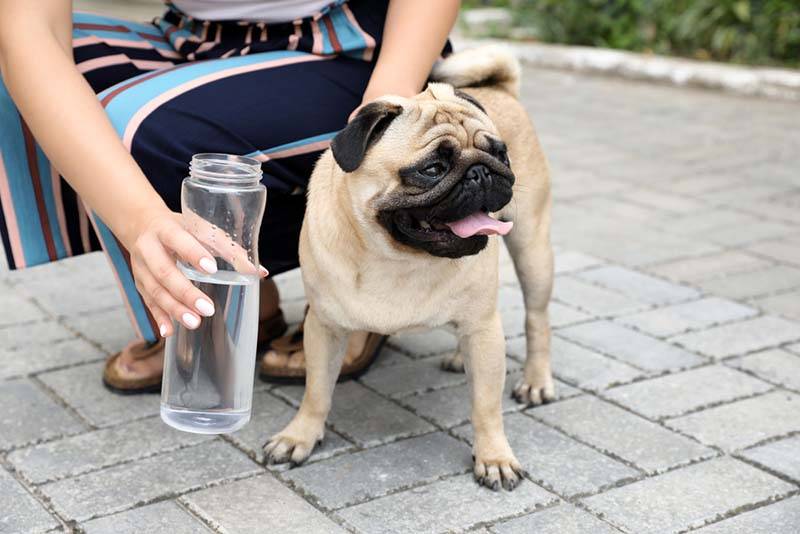
Reasons for low temperature:
Subcooling – a decrease in body temperature against the background of prolonged exposure to low ambient temperatures on the body. It is more common for puppies left without a mother, rarely for adult animals. Symptoms: lethargy, refusal to eat, frequent sleep, bluish paws or unpigmented nose, low body temperature to the touch. First aid at home: artificial increase in body temperature – warm with the heat of your own body, water or electric heating pads. For safety reasons, it is important to carefully monitor all artificial means of heating. Treatment in the clinic: it is important to examine the dog and exclude any side causes of a decrease in temperature, such as malnutrition, poisoning, helminthic invasion, an asymptomatic infectious process, and others.
Poisoning can occur for various reasons: eating household chemicals, domestic or wild plants, rat poison, spoiled food, etc. Poisoning, as a rule, is manifested by changes in the gastrointestinal tract – vomiting, diarrhea, salivation, or locally – under the influence of poison insect, snake, swelling at the site of the bite, necrosis of the surrounding soft tissues, soreness. Immediately after you discover that your dog has been eating poisonous substances, it is important to contact the clinic immediately. Within 5-6 hours, the veterinarian can still perform a gastric lavage, and all the available amount of poison will be washed out of the stomach along with all its contents. Next, antioxidant therapy will be carried out – in the case of an antidote to this poison, or infusion therapy – in order to dilute and remove the poison from the blood with urine. Wounds and bites are also important to treat as quickly as possible. In the future, therapy will vary depending on the poison with which the dog was struck. Therefore, it is extremely important for the owner to pay attention to or take with him to the clinic the drug, plant, insect, because of which the dog was poisoned, if, of course, one was found.
Systemic organ damage – e.g. liver, kidneys, cardiovascular system. Chronic or acute disorders of the pet’s organs can be severe and often fatal. Therefore, it is extremely important to contact the veterinary clinic without waiting for complications and deterioration of the dog’s condition. Diagnosis, treatment and appointments will directly depend on the organ system that has been affected. As a rule, the following types of studies are included in the minimum diagnostics: general clinical blood test, biochemical blood test, electrolytes, ultrasound.
Hemorrhage, post-traumatic shock. In such a situation, it is important to stop bleeding as soon as possible, if any is observed outside, to transport the animal to the clinic. The doctor will conduct a triage, evaluate all the vital signs of the pet and draw up a strategy for helping and stabilizing his condition. In such cases, the speed of diagnosis and assistance is most important. The owner is often asked to wait in the lobby for a drink of water while the doctors attend to the patient. Usually a general clinical blood test is performed, blood pressure and sugar are measured, a brief ultrasound of the chest and abdominal cavities is done, an x-ray is possible. Depending on the identified injuries, the necessary assistance will be provided to the pet.
Hormonal disorders. For example, hypothyroidism is a chronic lesion of the thyroid gland, in which there is a constant slowdown in all processes occurring in the body. It is manifested by edema, a decrease in temperature, obesity, etc. Periodic diagnostics and preventive examination by a veterinarian at least once a year are important here. He will be able to note changes in dynamics, make tests for thyroid hormones and prescribe further therapy.

Physiological reasons:
Childbirth, prenatal condition. Two or three days before the onset of labor, without any harm to health, the dog’s temperature, as a rule, decreases by 1-1,5 degrees. This serves as an indicator for the owner of the need to prepare for the upcoming birth.
Stress. This is an adaptive reaction of the body, manifested in response to the impact of environmental stress factors. It’s impossible to pinpoint all the likely stress factors that affect your dog’s body, but you can definitely count them among them: going to the doctor, driving a car if the dog is not used to it, leaving the owner from home. During a period of stress, the temperature of a pet can rise by 1 or even 2 degrees Celsius. And in this case, in itself, an increase in temperature does not indicate any pathology.
Physical activity. During an active run or workout, blood pressure rises, which contributes to an increase in temperature by 1-2 degrees Celsius.
Feeding. During the period of eating food, the body spends a fairly large amount of energy on its use: chewing, splitting, assimilation. During this period of active internal work of the body, body temperature can rise by 0,5–1 degrees Celsius.
Vaccination – an event aimed at introducing weakened viral components into the body in order to form stable immunity in the body. During the day after the introduction of the vaccine, the pet may be lethargic, lethargic, sleep more. Including the temperature may rise by 1-2 degrees Celsius.
Ambient temperature. Body temperature changes, upwards or downwards, respectively, under the influence of heat or cold, high or low humidity, especially taking into account the individual characteristics of the pet (voluminous fur or, conversely, a short sparse pile).

As you have already noticed, the physiological increase or decrease in body temperature is characterized by the presence of a cause in the anamnesis and a weak range in changes. In other words, a physiologically normal temperature increase will never be above 39,5 or below 37,8 degrees.
Answers to frequently asked questions:





